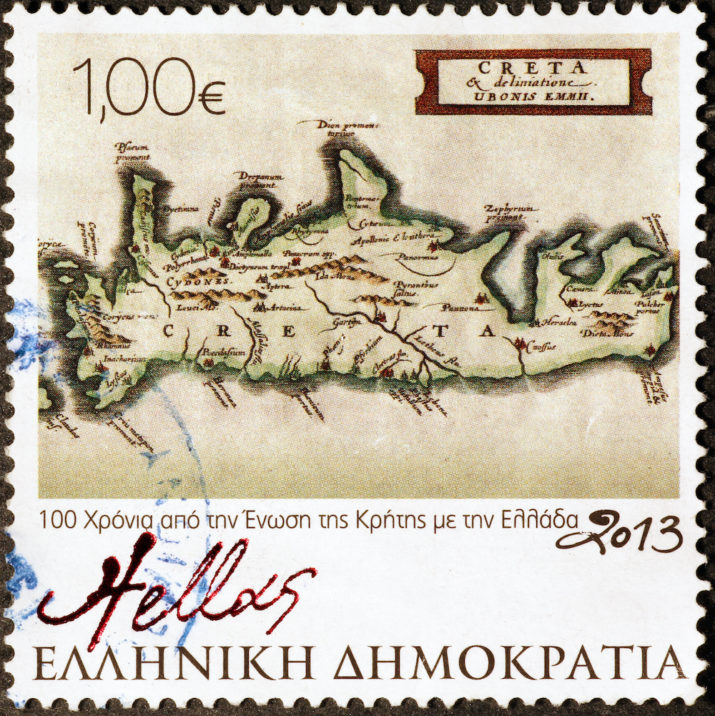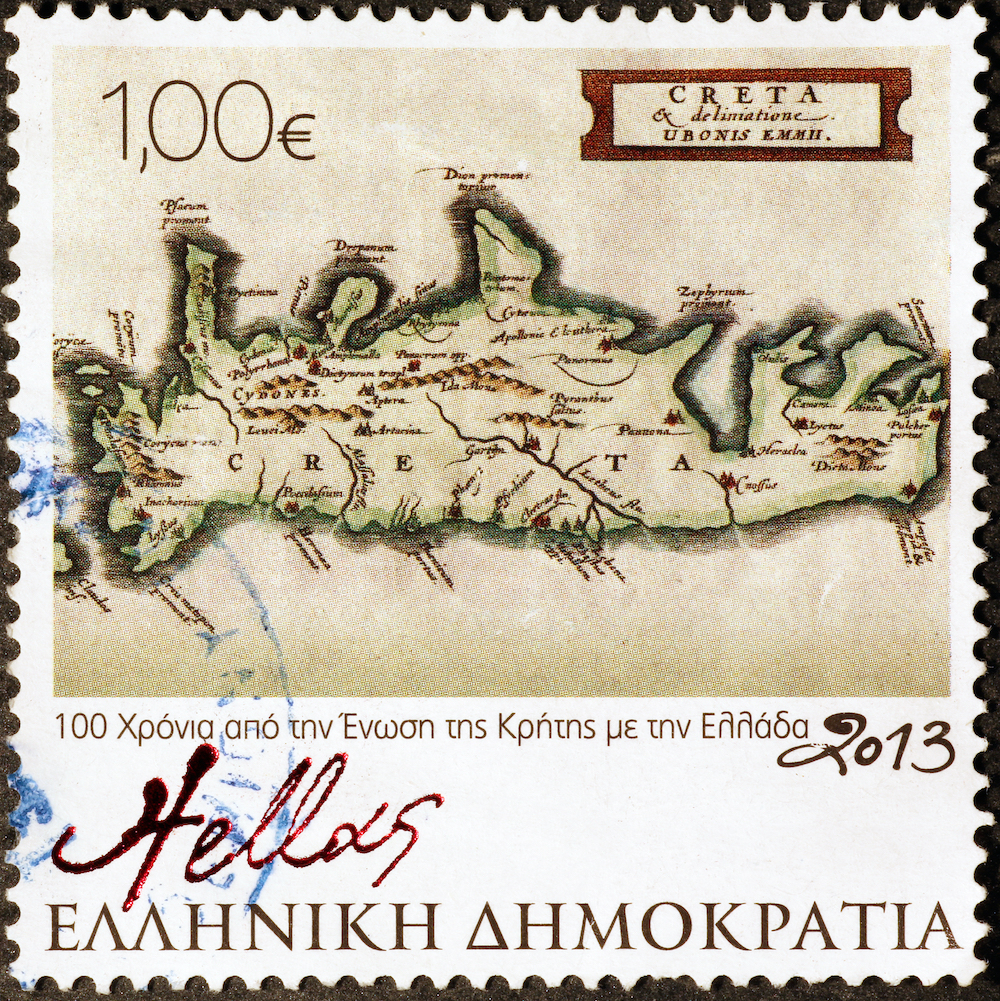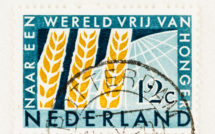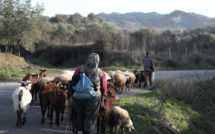

This is part of our special feature on Rurality in Europe.
The rural-urban divide as a cultural norm
Two young urbanite Herakliots, an architect and a cinematographer, who both hail from highland Crete were deeply engaged in conversation following a recent spate of armed violence in a village back in 2012. The first asked exasperatedly, “Will ever the urbane Cretans and the Petsia (raw hides, a derogatory expression for Cretan villagers) get along together?” “No,” answered the other. “Because they are so fascinated with each other.” This conversation, in my view, encapsulates perfectly the ambivalence of the relationships between urban and rural populations in Crete, their dependence on representational fantasies and the porousness of definitions and distinctions. Indeed, the relationship between urban and rural places in Crete, especially as it is reflected in social relationships (Anagnostopoulos 2018) and representations that have occupied various public media (Kalantzis 2019) is one of simultaneous fascination and aversion. Rural places, especially highlands ones, are seen by more urbane Cretans as unruly, macho, bombastic, excessively tied up with tradition and family values, politically conservative, and socially backward. Each of these characterizations can become, simultaneously, an object of near veneration and regional pride, transforming rural places into an imagined source of authenticity, closely connected with natural beauty.
This distinction can be further sharpened by looking carefully at the sociological existence of town and village in Crete—both historically and currently—and behind the representational fantasies of rural Cretans (black shirt, abundant facial hair, machismo, and potential gun totting) many Cretan men subscribe to, towards instead the real everyday life of rural places and their connections with urban ones. I do not argue that this reality effectively undermines the representational force of stereotypes, but that it interplays with them in a way that makes us rethink the issue in political terms. I am writing this as a Cretan myself, who holds a very ambivalent relationship with his birthplace, and nowadays, his occasional place of residence. The instances I present here derive from extensive (nearly decade-long) ethnographic work in a mountainous region near the capital of Heraklion (Kyriakidis and Anagnostopoulos 2015, 2017, forthcoming), as well as numerous ethnographic encounters with inhabitants of the intensively cultivated, lush eastern plains of the Heraklion prefecture and struggling farmers on the Lasithi plateau.
What is a village?
To begin with, there is the question of how to exactly define a village in Crete (or elsewhere, for that matter). Pushed by urbanization and low agricultural incomes—especially as communications and transport became intensified by new technologies—the twentieth century was marked by the transformation of rural places as places of exclusive residence into nodes in the movement of people, animals, and things. Particularly for places that are within reasonable driving distance from urban centers (up to an hour’s drive), it may be more productive to think of them as satellites in an agglomeration of settlements, drawn by the gravitational pull of urban centers. Indeed, Heraklio itself is surrounded by a zone of ever sparser population clusters, where “natural” environment and cultivated fields increasingly intermingle with expanding urban living. For many inhabitants living in the villages in the outskirts of the city, Heraklion is the go-to place for work, shopping, medical care, and entertainment. At the same time, many Herakliot professionals of various class backgrounds now choose to live in rural places at the outskirts of the city, either due to low rent prices, or because they appreciate the quiet and cleanatmosphere of the countryside—or sometimes both.
The population of Heraklio, especially middle-aged Cretans, overwhelmingly comprises rural people who have moved permanently to the city or its outskirts to make a living. This in-migration starkly precipitated after WWII, mostly due to dropping prices in agricultural produce and famine setting in rural places, but also because of rural people’s strong desire to get a university or technical education, with the chief goal of working for the civil sector or one of the big state-owned companies. Most of these internal migrants kept a very strong connection with their place of origin, which translated to an unbroken communication with family members who stayed behind, regular forays back, and a dependence on rural exchange networks for a living. It is very common to encounter middle-aged professionals working and living in the city, who nevertheless keep olive groves, vineyards, gardens, and sometimes even spirit distilleries in the countryside, frequently tending to those as well as to the familial-social networks necessary for their upkeep. Additionally, most of this rural-urban migration aimed towards relatively sparsely inhabited areas (e.g. the western shores of the city), where people from one village or region settled all together. Thus, a buffer zone of semi-rural, or semi-urban, places was created, that makes the definition of a city or a village much more fluid.
From the perspective of settled villagers, this precipitous out-migration was seen as a process of abandonment. Indeed, for Gonies (the village I have worked with for nearly a decade now as member of the Three Peak Sanctuaries of Central Crete archaeological project), the demographics are stunning: from a dense settlement of a couple of hundred people to well over a thousand after WWII, it dropped back to a couple of hundreds in the decades following the 1960s and 1970s. There was some return migration, especially of men who had left to find work abroad, during the latter years of the 1980s, but the population of the village never picked up again. During the financial crisis of the early 2010s, there was talk in Greece of a tendency of younger people to return to rural places, where living was still relatively cheap. Although the reality of this movement has yet to be documented for Cretan villages at large, it affected Gonies very little. This long-term process of depopulation was conversely seen by members of the village diaspora as a spreading out of village interests over a very large area of global proportions, creating what a writer from the village has called “Gonianosyni” (Papadakis 2001).
For Gonies, as with other mountain villages of transhumant shepherds and farmers, mobility was a norm well before this momentous migration. Besides the annual movement of large groups of agnatically-related male shepherds, Goniote stone masons toured the island in groups, building places as diverse as individual homes and “traditional” bungalows for large, internationally owned hotel developments on the eastern shores of the island. At the same time, there had been a possibly centuries-long movement of agricultural manual laborers, both men and women, from the poor mountain regions of mount Ida towards the fertile farms of the northern plains, near the coastal cities of Heraklio and Rethymno. This leads to a double realization: First, that even at times of booming demographics, it is uncertain how many people actually resided in the village at any time. Second, that villages, besides their cultural representation as fixed, immobile places with sedentary populations, are marked by a very dynamic mobility. These realizations point at practices of dwelling that may have influenced the demographic picture of rural places in unexpected ways. For example, it is a customary but little-studied practice of rural migrants to cities to return to their villages during national censuses. This is an intentional practice that increases recorded inhabitants, and subsequently affords more schools, medical centers, as well as municipal funds allocated for villages that have in reality few year-round inhabitants.
As it was evident at many points during the ethnographic research, the question of who is a villager is relative and certainly not judged by permanent residence alone. Of course, those who reside in the village permanently occupy the higher moral ground, since this demonstrates their hardiness, endurance, and closeness to nature (see also Herzfeld 1985, 22; Kalantzis 2019, 51; Tsantiropoulos 2004, 118). Besides drawing from a purportedly deep source of authenticity, most male permanent inhabitants also inscribe themselves in a notion of masculinity related with dwelling in mountainous places, despite the fact that the most dedicated permanent dwellers of such places, and perhaps the hardiest ones, are elderly women. To complicate the picture a bit more, it is evident that permanent residence may form the scale of reference for gauging loyalty to the village, but belonging is more of a continuum rather than a black and white case. As such, there are several layers of relationships to this place: first of all, there are those who live in the city suburbs. Goniotes have formed a cluster of habitation with other in-migrants from the region, at the seaside resort town of Gazi, a mere half an hour drive from Gonies. Relationships in their chosen place of habitation are still mediated by loyalties to their place of origin. For many, familial or agricultural obligations make them take the treacherous drive to the village very often, sometimes even daily. This has led some of the city dwellers to renew their family homes and turn them into holiday abodes, sometimes also put up on airbnb. There are several houses in the village that have been indeed renovated and are either used by people who come back for weekends, seeking peace and quiet in the rural landscape, or by seasonal returnees, who come with their family to spend part of the summer vacations there.
The development of faster transport, but also of new digital communications, has also altered the sense of belonging to the village significantly. Mobility was very common in the past, for both men and women, but the introduction of new generation cars and motorbikes has shortened the time necessary to shuttle back and forth between the village and the city. It has also altered profoundly the nature of old professions, such as animal husbandry: shepherds in the past spent most of their time with their flocks, seasonally moving them to and from colder pastures in the mountains and warmer and richer grazing grounds at lower altitudes. Communication between the village and the shepherds’ dens was only by donkey or foot. Nowadays, powerful cars and even rudimentary roads ensure that a shepherd can tend to his sheep and still spend the night in the village, or even sometimes in town.
Digital communications, and especially social media, have also altered the degree of control that people from the village but residing elsewhere have on their place of origin. And this is not restricted to younger generations. Even women of mature age, for example, keep some of the most active Facebook accounts in the village, through which they interact not only with fellow villagers―relatives or not and whether they reside there or thousands of miles away in the US or Australia―but also with research activities on their village. This increased degree of networking not only helps migrants abroad stay informed, but allows them to intervene in what happens to their village in real time, so that they can exert pressure and even pull strings if they find it necessary. This has profoundly reshaped the feeling and definition of community and forces us to rework our assumptions about rural and urban, central and out-of the-way places. During the initial stages of the research project, the archaeological team created a Facebook page with a description of the main archaeological places we were investigating in the area. The next morning, the president of the village cultural association gave me an anxious call to establish that, although it was mentioned as such in the literature, one of the archaeological sites we were working at did not belong to the nearby village of Krousonas, but to Gonies, and to ask me to make the appropriate correction. The trajectory of this information was impressive; the slip was noticed by a Goniote residing in the US who reported to the president overnight.
The political history of ambivalence
The gradual transformation of the administrative regional system of the Greek state also bears on the political organization of rural places. As far back as the nineteenth century, the Cretan countryside was the springboard for a series of revolts against the Ottoman authorities that up to 1898 controlled the island. The dependence on rural political networks, mostly based on kin, may account for the impressive number of successive insurrections during the century; but it also accounts for the ambivalent way in which rural political organization was finally incorporated into the dealings of the new autonomous state (1898-1912) and the union of Crete with the Greek state in 1913 (Anagnostopoulos 2015). Significantly, most of the up and coming professionals who constituted the new middle and upper middle urban classes, were people from the countryside who used mostly marital strategies to solidify their careers in the city (Anagnostopoulos 2014). The ambivalence with which those figureheads of business and politics approached the countryside of their origin is best portrayed in a well-known photograph of Eleftherios Venizelos―who would later become prime minister of Greece― taken during the successful revolt of Therisso in 1906, in which he is shed of his usual “western” suit, sporting Cretan breeches instead. This readiness to switch registers, from urbane to rural, is still a characteristic of urban settlers in Crete, but it is also representative of the ambivalence with which the state itself approaches insubordinate rural populations in Crete.
The representational aspect of rural Crete should be read alongside a more recent history of political organization of rural life there. During the 1980s, the ruling social-democratic PASOK party effectively tied agricultural production in Greece to EU mandates, funneling in European money in the form of subsidies. This gave a new lease on life to many rural places, but also brought an increased dependency on monocultures—especially olives and vines. PASOK also enhanced, at least in the first years of its rule, the activity of various forms of grassroots organizations—from local party cadres to agricultural associations, to local associations—while it effectively dismantled older cultural associations, which had been the organizing spaces of left-wing politics, at least since the early 1960s. For Gonies, the 1980s were marked by an effort to build the infrastructure necessary to bring people back to the village: a new municipal office and a new medical office were founded, besides a football field, several olive presses, renewed roads, and increased access to electricity and privately-owned phones.
Later, the Kapoditrias (1998) and Kalikratis (2010) reforms of regional administration significantly altered the political impress of local places on central authorities. Both plans effectively centralized administration toward regional municipalities, by bringing together under the same district numerous localities with very different characteristics and needs (Chorianopoulos 2012). In the case of Gonies, as with the entire neighboring mountainous region, this led to an increased marginalization from the administrative center, and an increase in the political effort required to secure funds and resources.
The plurality of rural landscapes in supermodernity
Mass tourism now constitutes a significant force in the economy of the island and puts in motion very complex transformations on various levels. Besides the obvious dependence on seasonal work (see e.g. Buck-Morrs 1987, 226) by a large part of its population (both indigenous and immigrant), there are also repercussions for the ways in which landscapes are constituted and imagined. Perhaps the main force in this direction is what has been called “heritagization,” meaning the aesthetic and material standardization of an increasingly pervasive preoccupation with the past as “object” (Harrison 2013: 166) —especially as has been encouraged by EU programs (cf. Ray 2000). During the research phase of the project, the municipality of Malevizi dedicated a good amount of money from European programs to refashioning the landscape surrounding the community-restored windmill, a landmark for the village and a source of pride for its inhabitants. As a public work, it encapsulates perfectly the economic, material, and aesthetic considerations of most such programs. It was conducted by non-local artisans (despite the long stone masonry tradition in the village) with stone bought cheaply from a quarry miles away, according to a landscape design that referred to a vague notion of “traditional” architecture, without any understanding of the utility of the windmill. Moreover, it was left unfinished and no provision was made for its preservation.
This aesthetic and practical ideology of European programs as part of heritagization in Crete involves a translation of people’s everyday life and cultural characteristics into a unified, solid, marketable object that furthermore locals become trained to appreciate as their own “heritage.” In this way, local places begin to “have” culture, or “have” heritage, as an alienated good to be valued by a bulging tourist industry. At the same time, this process cuts at the point of friction between the use-value aesthetics of Cretan villages (houses made of concrete after the 1970s) and the heritage aesthetics of urbane individuals who insist on the preservation of old houses, that may be perfect for tourist abodes, but are not practical for people engaging in agricultural or other trades. This, for places like Gonies, leads to an erasure of evidence on hardship and oppression: a thatched-roof house of a couple square meters where people and animals lived in abject poverty may now be transformed into an attractive, “traditional” one bedroom rental flat.
Finally, rural landscapes are also transformed into super-modern energy production areas, with the installation of solar panels and wind turbines on abandoned agricultural land or pastures—usually rented by large energy production companies for very low prices. Besides the obvious questions this poses about the common good (air turbines producing electricity for non-local consumption) and its antagonistic relationship with local communities, the transformation of the very notion of nature as a pure, untouched landscape is also at stake. An additional element of this landscape transformation is the role of the state archaeological service that, with its strict protection laws and its adherence to the core of nation-building processes, maintains the power and the ability to stop large developments from intruding into archaeologically protected land, thus becoming an unexpected player in environmental politics in Greece. Rural landscapes in Crete are complex spaces that are crisscrossed by material considerations and ideational valuations, where the past qua heritage and tradition coexists with cutting edge technologies, where sublime views are cross cut with telecommunications towers and archaeological spaces, and where age old place names and practices are juxtaposed on social media posts with a global reach.
Aris Anagnostopoulos is a social anthropologist and historian. His research interests focus on the politics and poetics of the material aspects of the past in the present and especially the field of archaeological ethnography; he has also published extensively on the creation of public space in early twentieth century Crete. He currently works as a public programs director with HERITΛGE, holds a Honorary Lectureship at the University of Kent, and teaches at the Heritage Management MA (Kent & AUEB) in Elefsina, Greece, as well as the Anthropological Research Laboratory at Panteio University, Athens, Greece.
References:
Anagnostopoulos Aris, 2020. “Archaeological ‘Protection zones’ and the limits of the possible. Archaeological law, abandonment and contested spaces in Greece.” In: E. Solomon (ed.), Contested Antiquity, 219-242. Bloomington: University of Indiana Press.
Anagnostopoulos, Aris, 2019. “Delusion Street: commemoration and monumentality in post-Ottoman Iraklio, Crete.” History and Anthropology 30(3): 256-275.
Anagnostopoulos Aris 2018. “From ‘Tourkopolis’ to ‘Metropolis’: transforming urban boundaries in late 19th century Iraklio, Crete.” Journal of the Economic and Social History of the Orient 61(4):693-725.
Anagnostopoulos, Aris, 2016. “Cosmopolitanism or constitutive violence? The creation of “Turkish” Iraklio.” In Post-Ottoman Coexistence: Sharing Space in the Shadow of Conflict, Rebecca Bryant (ed.), 86-107. Oxford: Berghahn.
Anagnostopoulos, Aris, 2014. “Writing the Cretan woman. Gender and society in two ethnographies of fin-de-siècle Crete.” Journal of Modern Greek Studies 32(1):81-110.
Buck-Morss, Susan. 1987. “Semiotic Boundaries and the Politics of Meaning: Modernity on Tour—A Village in Transition.” In New Ways of Knowing: The Sciences, Society, and Reconstructive Knowledge, Marcus G. Raskin and Herbert J. Bernstein (eds.), 200–236. Totowa, NJ: Rowman and Littlefield.
Chorianopoulos, Ioannis. 2012. “State spatial restructuring in Greece: forced rescaling, unresponsive localities.” European Urban and Regional Studies 19(4): 331-348.
Harrison, Rodney. 2013. Heritage: Critical Approaches. London: Routledge.
Herzfeld, Michael. 1985. The Poetics of Manhood: Contest and Identity in a Cretan Mountain Village. Princeton, NJ: Princeton University Press.
Kalantzis, Konstantinos. 2019. Tradition in the Frame. Photography, Power, and Imagination in Sfakia, Crete. Bloomington: Indiana University Press.
Kyriakidis, Evangelos and Anagnostopoulos, Aris, forthcoming, “Decision making in Archaeological Heritage: Prospects and Limitations of enhancing Democracy through a Community Archaeology project in Crete.” In E. Stefanou and I. Antoniadou (eds.) Archaeological Ethnography: the Greek context. Special Issue, Journal of Community Archaeology and Heritage.
Kyriakidis, Evangelos and Anagnostopoulos, Aris, 2017. “Engaging local communities in heritage decision making: the case of Gonies, Crete, Greece.” Journal of Eastern Mediterranean Archaeology and Heritage Studies 5 (3-4): 334-348.
Kyriakidis, Evangelos and Anagnostopoulos, Aris, 2015 “Archaeological Ethnography, Heritage Management, and Community Archaeology: A Pragmatic Approach from Crete.” Public Archaeology 14(4): 1-23.
Papadakis, Manolis. 2001. Gonies. Ena taksidi sto chrono kai sto choro. Thessaloniki: Ekdoseis Aplatanos.
Ray, Christopher. 2000. The EU LEADER Programme: Rural Development Laboratory. Sociologia Ruralis 40(2): 163-171.
Tsantiropoulos, Aris. 2004. I vendeta sti sighroni oreini kentriki Kriti. Athens: Plethron.
Photo: Ancient map of Crete on postage stamp | Shutterstock
Published on November 10, 2020.




